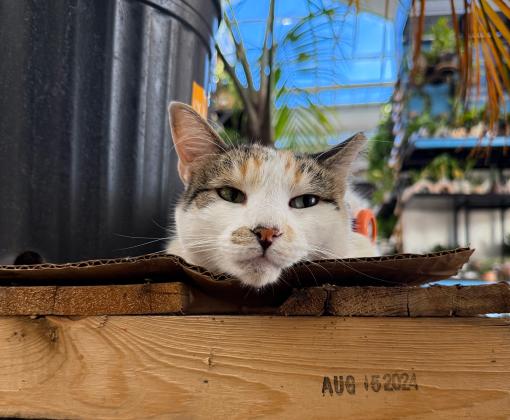
Ear-Tipping Cats: What It Is and Why It's Done
If you have community cats (aka ownerless cats who live outdoors) in your neighborhood, you might have noticed that some or all of these outdoor cats have an ear that is squared off instead of pointy at the tip. These cats have undergone a procedure known as ear-tipping. Here are some answers to frequently asked questions about ear-tipping cats.
What is cat ear-tipping?
Cat ear-tipping involves surgically removing a small portion of one of a cat’s ears while the cat is under anesthesia for spay or neuter surgery. It is the universally accepted way to signify that a community cat has been spayed or neutered, which means no new kittens will be born — and that’s a good thing.
The cat ear-tipping procedure is generally done as part of a trap-neuter-vaccinate-return (TNVR) program, which involves humanely trapping community cats, vaccinating them, getting them spayed or neutered, and then returning them to their neighborhoods to live out their lives. TNVR is the best way to humanely reduce the population of ownerless outdoor cats.

See how your community is doing
What does it mean when a cat's ear is tipped?
If you’ve spent any time around community cats, you know that getting close to one might not be an easy task. In general, these aren’t family pets. These are cats who have spent all (or a significant part) of their lives outside, and they have had varying degrees of socialization with people. They are lovable in their own way, but they are not always the cuddly types.
There are kind people around the country who keep an eye on community cats in their neighborhoods, helping to get the cats fixed through TNVR programs. Ear-tipping cats allows them to tell from a distance whether a community cat has been spayed or neutered. That tipped ear saves the cat the stress of being trapped and anesthetized for a second time.
Ear-tipping cats can also help anyone who is feeding the cats keep track of them and notice whether a new cat has joined the community. And it lets animal services officers know that a cat benefitted from TNVR and has been seen by a veterinarian. In short, an ear-tip tells everyone that someone has invested time and resources in the cat's well-being.
Does ear-tipping hurt a cat?
Cat ear-tipping is extremely safe and is performed while the cat is already anesthetized for spay or neuter surgery. There is little or no bleeding involved, and it is not painful to the cat. The ear heals up quickly, and the tipped ear doesn’t detract one bit from the appearance or beauty of the cat.
